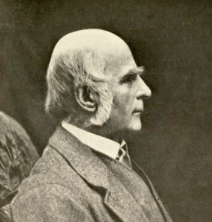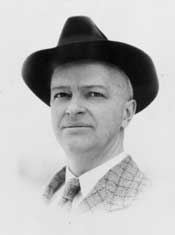Eugenics Begins

"Sir Francis Galton," 1908, Center for the History of Medicine
at Countway Library
"Eugenics emerged in England in the late 1800s, when Francis Galton, a half cousin of Charles Darwin, began studying the families of some of history’s greatest thinkers and concluded that genius was hereditary. Galton invented a new word—combining the Greek for 'good' and 'genes'—and launched a movement calling for society to take affirmative steps to promote 'the more suitable races or strains of blood'" (Cohen).
Galton helped spread his new study to America when he communicated with a young zoologist, Charles Davenport. Davenport would speak to organizations around America. He began to collect pedigrees of America, founding Cold Spring Harbor, which would serve as headquarters to the eugenics movement in America.
The Eugenics Record Office (ERO) and Laughlin
The Eugenics Record Office began as an organization to collect America's family history.
Davenport needed someone to handle the work of getting states to pass forced sterilization legislation. He found the perfect man in Harry H. Laughlin. The son of a minister, Laughlin was originally a teacher at Oskaloosa College with a background in agricultural breeding. He would be instrumental in communicating eugenics to state legislatures.
Working at Cold Spring Harbor, Laughlin became the man responsible for taking the eugenics movement from an idea championed by America's elite to a legislative force. He took the ERO from an organization dedicated to collecting genetic information on Americans to a lobbying organization.
Laughlin set out to create the systems that would render thousands of Americans sterile.

"Harry H. Laughlin" American Philosophical Society